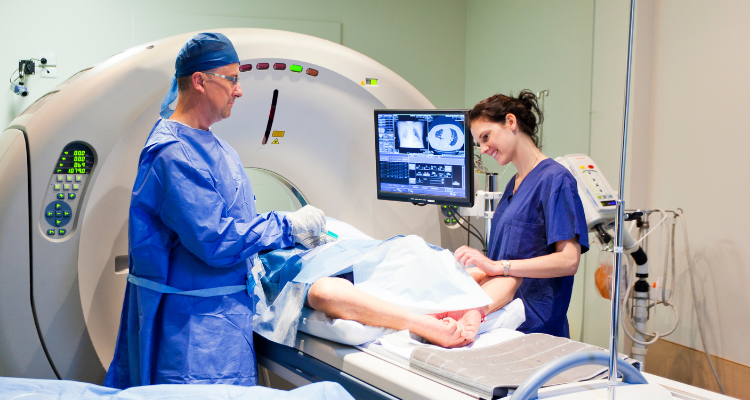Please make sure to watch a live recording of our webinar covering our shift with a Q&A session. WATCH HERE >
Or reach the Investor Relations department via email: investor@imagionbio.com

Our goal has always been to use medical imaging to change clinical practice, eliminate unnecessary biopsies and aid the early detection of cancer.
The data coming out of our Phase 1 clinical trial supports a shift in our strategy to a path that takes risks out of the plan and should accelerate our path to commercialization.
The clinical data obtained in our Phase I MagSense® HER2 imaging agent study indicates our molecularly targeted nanoparticle technology could be effective in helping to detect tumor in the regional lymph nodes of HER2-positive breast cancer patients when used in conjunction with conventional MRI scanners. Leveraging these results, we can now commit to developing our molecular imaging agents for use with MRI scanners as the fastest path to commercialization.


The shift to MRI as the detection technology eliminates the costs, risks and time to develop and seek regulatory approval for a new imaging platform. MRI systems are widely available in hospitals around the globe, making it easier to undertake clinical studies, and making market access easier and faster, which should allow us to attract a strategic commercial partner sooner.
Below we have tried to anticipate key questions and address the implications for the Company. We hope these FAQs help.
Magnetic Resonance Imaging (MRI) is a well-known and accepted medical imaging modality. There are more than 30,000 MRI scanners available around the world. By focusing the development of our imaging agents for use with MRI, we avoid the time and costs of developing a new type of imaging system that would have to compete for space and budget in the hospital. By making our imaging agents work with conventional MRI scanners, we anticipate faster commercial introduction and market uptake/acceptance – and a more attractive proposition for strategic commercial partners.
We will face the same risks associated with new product entry in established and entrenched markets where low-cost ultrasound is ubiquitous despite performance limitations. However, we believe introduction for use with MRI will reduce those risks compared to introducing a new technology. We are not aware of other players trying to address the unmet medical need that we are by molecular imaging and hence expect to benefit from being the first mover and potentially obtain regulatory exclusivity in certain jurisdictions if approved first.
We can now say that the primary objectives of the Phase 1 study have been achieved;
i) there have been no safety issue reported related to the imaging agent, and
ii) the imaging agent has demonstrated feasibility to detect cancer by both MRI and MRX.
We consider this to be a significant accomplishment. We plan to keep the current Phase I study open while we proceed with our plans for the next phase of development. Each new patient adds valuable context that can inform new study design and image interpretability.
Please make sure to watch a live recording of our webinar covering our shift with a Q&A session. WATCH HERE >
Or reach the Investor Relations department via email: investor@imagionbio.com
MELBOURNE – Imagion Biosystems (Company) (ASX : IBX), a company dedicated to improving healthcare outcomes through the early detection of cancer, is pleased to announce
Corporate Updates: $3M fundraising led by CPS Capital to be completed in early December Filing of IND for MagSense® HER2 Phase 2 Study Immediate Priority
Imagion Biosystems (ASX: IBX) (Company), is pleased to announce the Company has received $3 million of firm commitments through a highly successful capital raising. The
We’re on a mission to make cancer more detectable.
Stay informed about our latest news and developments.
© Imagion Biosystems, Ltd. All Rights Reserved | Privacy Policy | Terms & Conditions | Careers | Corporate Governance
